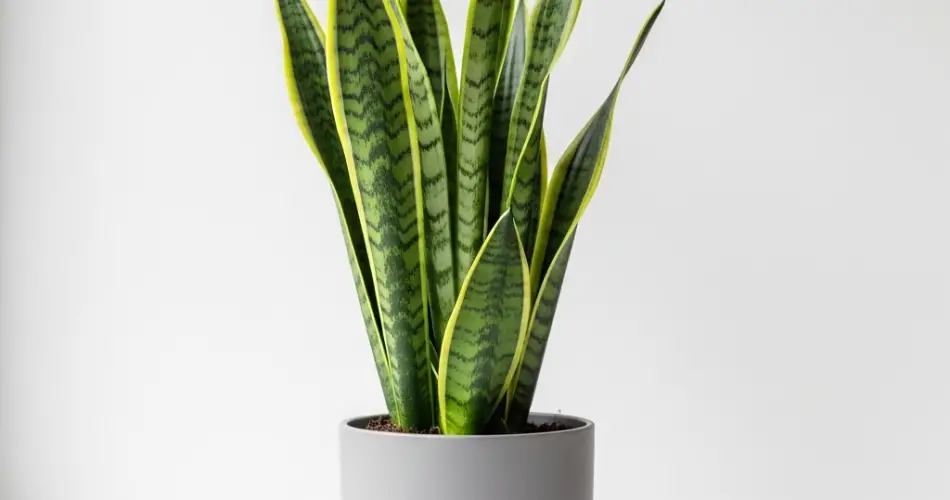The snake plant (Sansevieria), also known as mother-in-law’s tongue, is one of the most popular and resilient houseplants worldwide. Renowned for its striking upright leaves and ease of care, many people grow snake plants mainly for their architectural foliage. However, with the right care, snake plants can also produce vibrant, fragrant blooms that add a surprising splash of beauty indoors throughout the year.
If you want to learn how to cultivate your snake plant so it blooms regularly and stays healthy, this guide will provide all the essential tips, from selecting the right variety to optimizing conditions for flower production.
Understanding Snake Plant Basics
Snake plants are succulents native to West Africa, adapted to survive harsh conditions with minimal water and care. Their thick, fleshy leaves store moisture, making them drought tolerant and perfect for beginners. While flowering isn’t guaranteed for every snake plant, it is possible under favorable conditions, and the blooms are both unusual and delightful.
Choosing the Right Snake Plant Variety
While many snake plant varieties produce flowers, some are more likely to bloom than others:
-
Sansevieria trifasciata: The classic snake plant with dark green leaves and light banding, often flowers with cream-colored, tubular blooms.
-
Sansevieria cylindrica: Known for its cylindrical leaves, it occasionally produces small white flowers.
-
Sansevieria laurentii: Features yellow-edged leaves and can produce fragrant blooms.
Starting with a healthy, mature plant (at least 2-3 years old) improves the chances of flowering.
Providing Optimal Light Conditions
Snake plants tolerate low light but flower best in bright, indirect sunlight.
-
Place your plant near an east- or west-facing window.
-
Avoid direct, harsh afternoon sun that can scorch the leaves.
-
If natural light is limited, consider using supplemental grow lights to mimic sunlight.
Bright light encourages healthy growth and increases the likelihood of flowering.
Watering and Soil Requirements
Proper watering and soil are critical for maintaining a blooming snake plant.
-
Water sparingly; allow the top 2 inches of soil to dry out between waterings.
-
Overwatering can cause root rot and reduce flower production.
-
Use well-draining cactus or succulent soil to prevent water retention.
-
Ensure your pot has drainage holes to avoid standing water.
During winter or dormancy periods, reduce watering further.
Temperature and Humidity
Snake plants thrive in average household temperatures between 60°F and 85°F (15°C to 29°C).
-
Avoid exposing plants to temperatures below 50°F (10°C), as cold stress inhibits blooming.
-
These plants tolerate a wide range of humidity but generally prefer drier air.
-
Maintain good air circulation around the plant to prevent fungal problems.
Fertilizing for Flowering
Fertilizing helps provide nutrients that encourage flowering.
-
Use a balanced, diluted liquid fertilizer formulated for succulents or houseplants.
-
Feed your snake plant once a month during the growing season (spring through summer).
-
Avoid fertilizing in fall and winter when growth naturally slows.
Too much fertilizer, especially nitrogen-rich types, may promote leaf growth at the expense of flowers, so balance is key.
Encouraging Flowering
To stimulate blooms, snake plants benefit from slightly stressed conditions that mimic their natural environment.
-
Allow the soil to dry out more than usual between waterings.
-
Slightly reduce watering during the winter months.
-
Occasionally expose the plant to cooler night temperatures (around 55°F or 13°C) to mimic natural seasonal changes.
Patience is essential—snake plants may take years before flowering for the first time.
Pruning and Maintenance
Regular maintenance supports overall plant health and bloom potential.
-
Remove dead or damaged leaves at the base with clean scissors.
-
Wipe leaves with a damp cloth to remove dust, allowing better light absorption.
-
Repot every 2-3 years to refresh soil and accommodate root growth.
What Do Snake Plant Flowers Look Like?
Snake plant flowers are typically small, tubular, and creamy white with a pleasant fragrance. They emerge on tall stalks from the base of the plant, often at night, attracting pollinators in their native habitat. Flowering usually occurs in late spring or summer but can happen anytime with ideal care.
Propagation Tips
Propagating snake plants from leaf cuttings or divisions can help you grow more plants that may eventually bloom.
-
Leaf cuttings root in soil or water within weeks.
-
Dividing the root ball during repotting is the fastest way to produce mature plants.
Troubleshooting Common Problems
-
No blooms: Often caused by insufficient light, overwatering, or the plant being too young.
-
Yellowing leaves: Usually a sign of overwatering or poor drainage.
-
Pests: Watch for mealybugs and spider mites, treat infestations promptly with insecticidal soap.
Summary
Cultivating a snake plant that blooms year-round requires patience and consistent care, but the results are well worth the effort. By choosing the right variety, providing bright indirect light, watering properly, maintaining ideal temperatures, and feeding wisely, you can enjoy both the iconic foliage and charming flowers of this resilient houseplant.
Snake plants are low-maintenance and adaptable, making them perfect for both beginners and seasoned plant lovers. With dedication, your snake plant can become a vibrant, flowering centerpiece that brings life and beauty to any indoor space.



